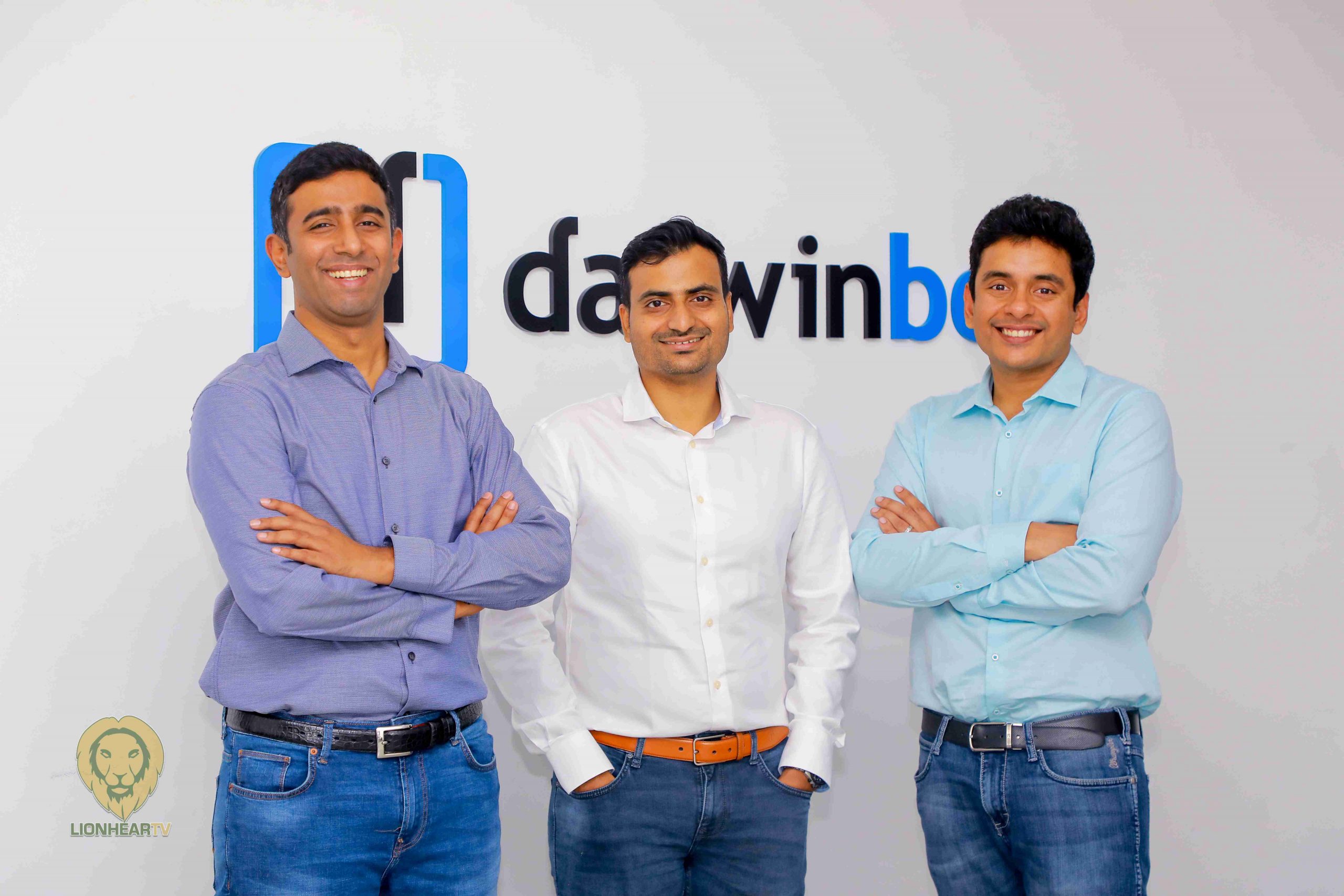
Entrepreneurs Chaitanya Peddi, Jayant Paleti, and Rohit Chennameni.
Starting out
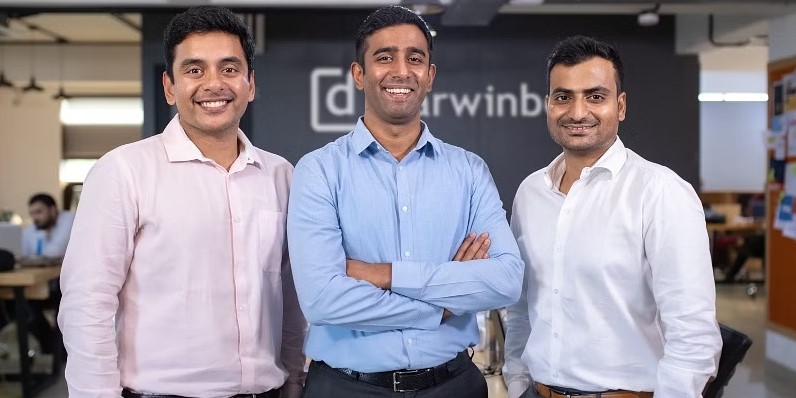
Meeting an unmet need
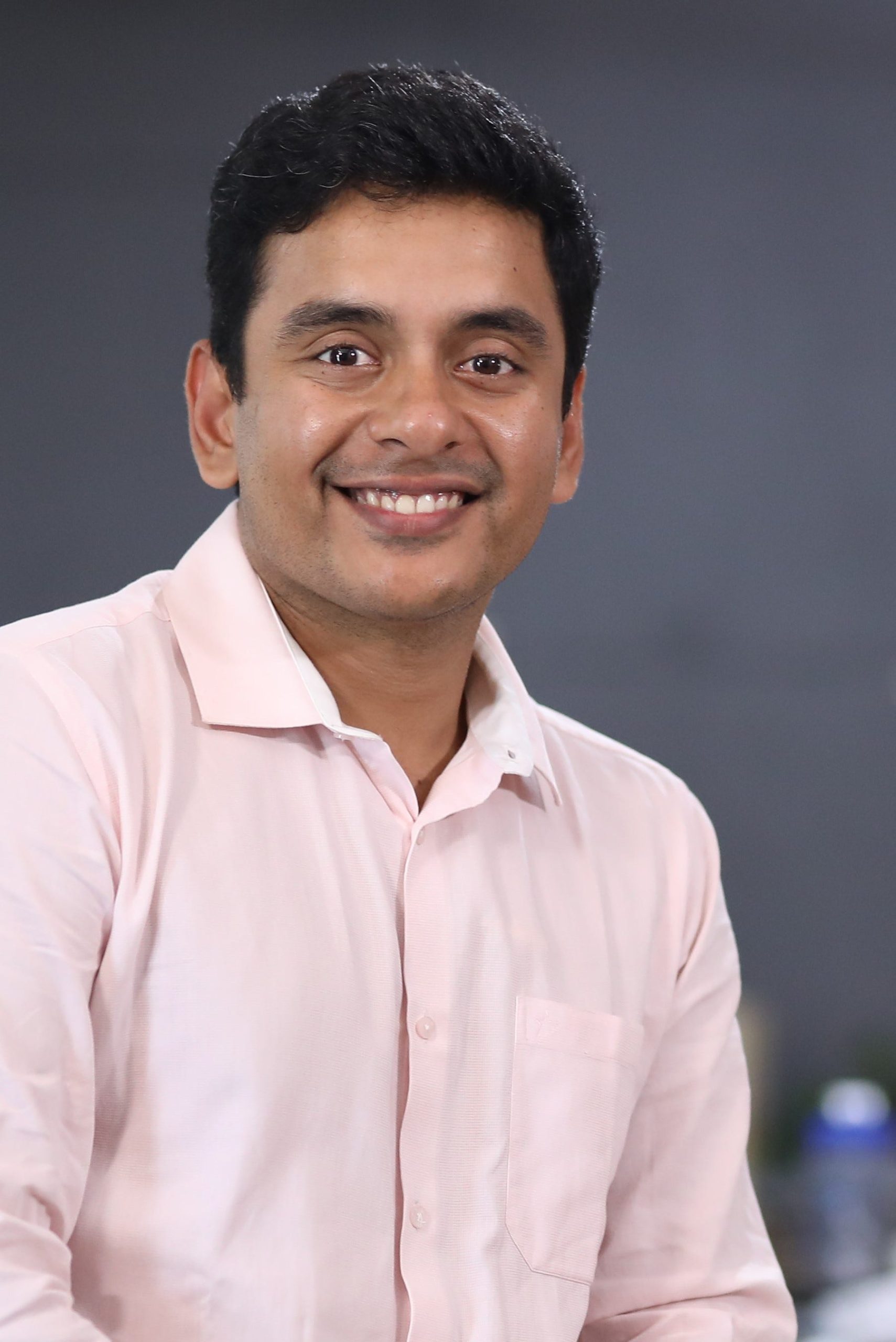
Rohit Chennameni., co founder of Darwinbox.
Breaching barriers
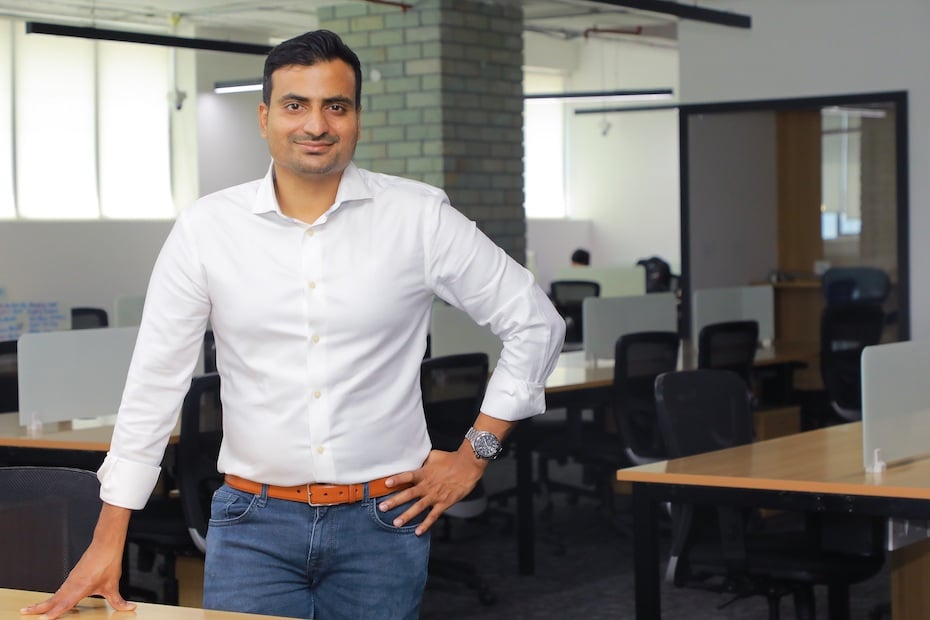
Chaitanya Peddi, co-founder of Darwinbox.


Entrepreneurs Chaitanya Peddi, Jayant Paleti, and Rohit Chennameni.


Rohit Chennameni., co founder of Darwinbox.

Chaitanya Peddi, co-founder of Darwinbox.
Published on 18, Aug 2023
(November 28, 2024) With striking similarities to his father, India’s External Affairs Minister S. Jaishankar, Dhruva Jaishankar carries a familial resemblance that’s hard to miss. Yet, when it comes to influences, Dhruva candidly admits that his grandfather, late Krishnaswamy Subrahmanyam—a renowned strategic affairs analyst, journalist, and former Indian civil servant—had a more profound impact on his worldview. "My grandfather was more of a thinker and analyst, whereas my father is more of a doer in active diplomacy," he reflects, speaking to Global Indian from Washington, D.C., and crediting deep conversations with his grandfather for shaping his perspectives on international relations. Today, as a foreign policy expert and the founding Executive Director of the Observer Research Foundation (ORF) America, a subsidiary of India’s ORF, he is working to build bridges between the U.S., India, and the developing world. [caption id="attachment_60724" align="aligncenter" width="604"] Dhruva Jaishankar[/caption] Dhruva is now gearing up for the release of his first book, Vishwa Shastra, published by Penguin Random House India. The book provides a comprehensive exploration of India’s interactions with the world, blending historical insights with forward-looking strategies. Dhruva’s research on foreign policy, defence, security, and globalization, has appeared in several books, policy reports, and prominent publications,
Read Morer.webp" alt="Indians in USA | Dhruva Jaishankar " width="604" height="404" /> Dhruva Jaishankar[/caption]
Dhruva is now gearing up for the release of his first book, Vishwa Shastra, published by Penguin Random House India. The book provides a comprehensive exploration of India’s interactions with the world, blending historical insights with forward-looking strategies. Dhruva’s research on foreign policy, defence, security, and globalization, has appeared in several books, policy reports, and prominent publications, cementing his reputation as a thought leader.
During his formative years, Dhruva Jaishankar lived a truly global life, moving across continents with his diplomat father—experiences that profoundly enriched his worldview. While Dhruva Jaishankar acknowledges the global exposure his father’s diplomatic career provided, he emphasizes the intellectual influence of his grandfather, Krishnaswamy Subrahmanyam. "My grandfather was opinionated analyst and eventually joined the defence think tank IDSA, where he became its second director until the mid-1980s. Later, he transitioned to a career in media, writing about strategic affairs. He passed away in 2011, but I was fortunate that our careers overlapped for a few years," Dhruva recalls.
During this time, he engaged in deep conversations with his grandfather that shaped his analytical approach to international relations. " My grandfather’s career in strategic affairs and his deep thinking on India’s role in the world had a lasting impact on me," Dhruva reflects. These insights, paired with the global exposure his father’s career afforded him, helped Dhruva develop his own unique perspective on global affairs.
[caption id="attachment_60732" align="aligncenter" width="465"]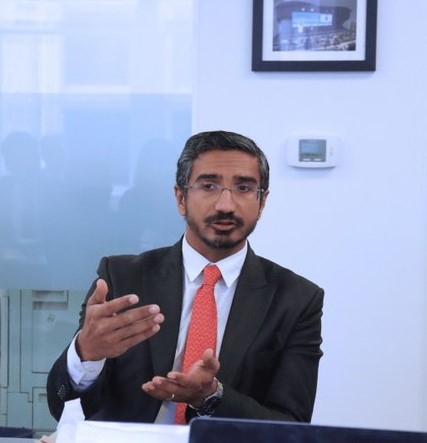 Dhruva Jaishankar[/caption]
Dhruva Jaishankar[/caption]
Born in Delhi, Dhruva Jaishankar spent his childhood moving across several countries, including the U.S. (where he lived briefly at a very young age), Sri Lanka, Hungary, India, Japan, and the Czech Republic. He began his schooling in Sri Lanka and continued his education across these nations before eventually moving to the U.S. for college.
This global upbringing instilled in him a deep understanding and appreciation for different cultures—an experience that would later become the bedrock of his professional life.
Dhruva Jaishankar’s interest in foreign policy deepened with a significant moment during his freshman year at Macalester College in the U.S., where he was pursuing his bachelor’s degree in history. "9/11 stirred a deep interest in security studies," he recalls, "and laid the foundation for what would become my lifelong career in foreign policy and international relations."
[caption id="attachment_60729" align="aligncenter" width="710"]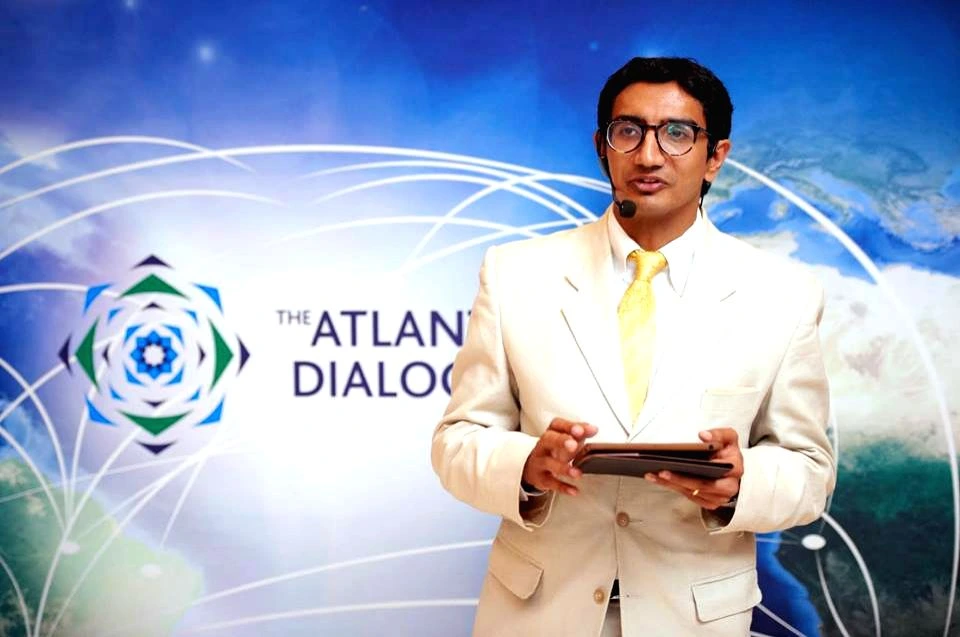 Dhruva Jaishankar during the early days of his career[/caption]
Dhruva Jaishankar during the early days of his career[/caption]
After graduating in 2005, he moved to Washington, D.C., where an internship at the Aspen Institute proved to be a turning point. "After finishing college, I moved to Washington, DC, without a clear idea of what I wanted to do. I ended up getting an internship at a think tank, which plunged me into the heart of U.S.-India relations at a pivotal time, just as the two countries announced a civil nuclear agreement," he explains.
Despite his grandfather’s legacy as a prominent Indian think tank leader, Dhruva admits he initially knew little about the field. "Although my grandfather had run a think tank in India, I didn’t know much about what the work entailed," he smiles. "That internship turned out to be a huge learning experience for me. That was my introduction to this world."
Early in his career, Dhruva faced a crossroads: should he pursue journalism or follow his growing interest in international relations? He briefly explored journalism, working as a news writer and reporter for CNN-IBN in New Delhi.
Ultimately, his passion for security and foreign policy won out. He pursued an M.A. in security studies from Georgetown University, where he was surrounded by military and security professionals. Initially feeling like an outsider, Dhruva Jaishankar credits this environment with building his confidence to engage in high-level discussions on global security, a skill that would become invaluable in his career.
[caption id="attachment_60731" align="aligncenter" width="413"]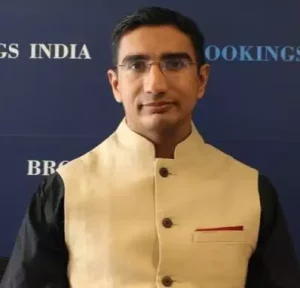 Dhruva Jaishankar during the early days of his career in India[/caption]
Dhruva Jaishankar during the early days of his career in India[/caption]
Working for prestigious organizations including Stephen Cohen as research assistant, and German Marshall Fund (GMF) in Washington, D.C., where he managed the India Trilateral Forum, a policy dialogue involving participants from India, Europe, and the United States, deepened his understanding of security and foreign policy. He also worked as a program officer with GMF’s Asia Program for the initial three years in the organization.
Dhruva returned to India in 2016 to work as a Fellow for Brookings India. This role marked a deep dive into India’s foreign affairs, counterterrorism, and nuclear non-proliferation. “At Brookings India I managed a lot of the new institution’s foreign policy and security activity. It enabled me to travel the length and breadth of India, around South Asia (Nepal, Bangladesh, Sri Lanka) and Southeast Asia, and I produced reports on defence technology, U.S.-India relations, and India’s Act East policy,” he shares. Later, he also served as a visiting fellow at the S. Rajaratnam School of International Studies in Singapore.
[caption id="attachment_60725" align="aligncenter" width="512"]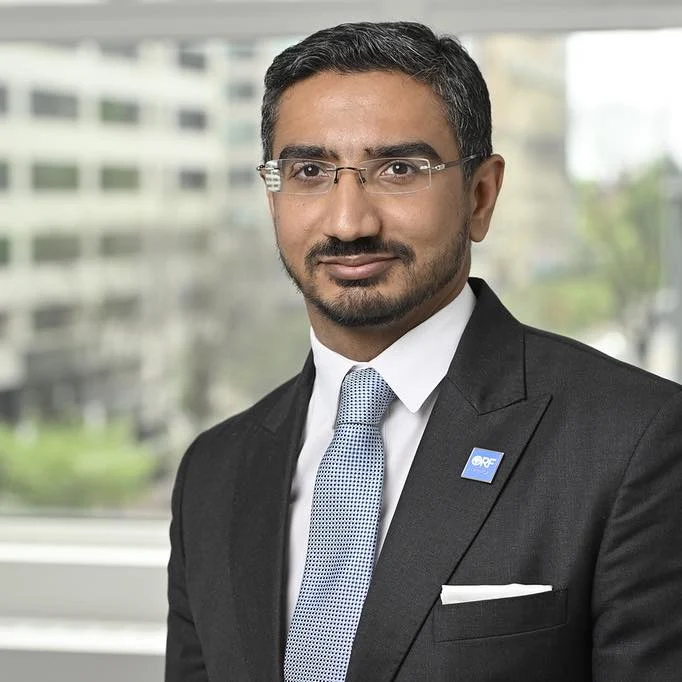 Dhruva Jaishankar[/caption]
Dhruva Jaishankar[/caption]
"Over the course of my 15-year career, I worked in diverse roles across various institutions in India, the U.S., and briefly in Singapore. This experience exposed me to a wide range of issues, regions, and the practical aspects of running a think tank," he shares. In 2020, Dhruva embarked on a new journey as the founding Executive Director of ORF America, the Washington, D.C.-based arm of India’s Observer Research Foundation, which began its journey in 1990.
In 2020, ORF was planning to establish its first affiliate outside India in the U.S. "Our paths crossed," Dhruva explains, and his experience in think tanks made him a natural fit for the role. This led to him becoming the founding Executive Director of ORF America, marking a significant milestone in his career.
He and his team at ORF America has focused on fostering cooperation between the U.S., India, and other global partners on pressing issues like technology policy, energy, climate, and international security.
[caption id="attachment_60790" align="aligncenter" width="668"]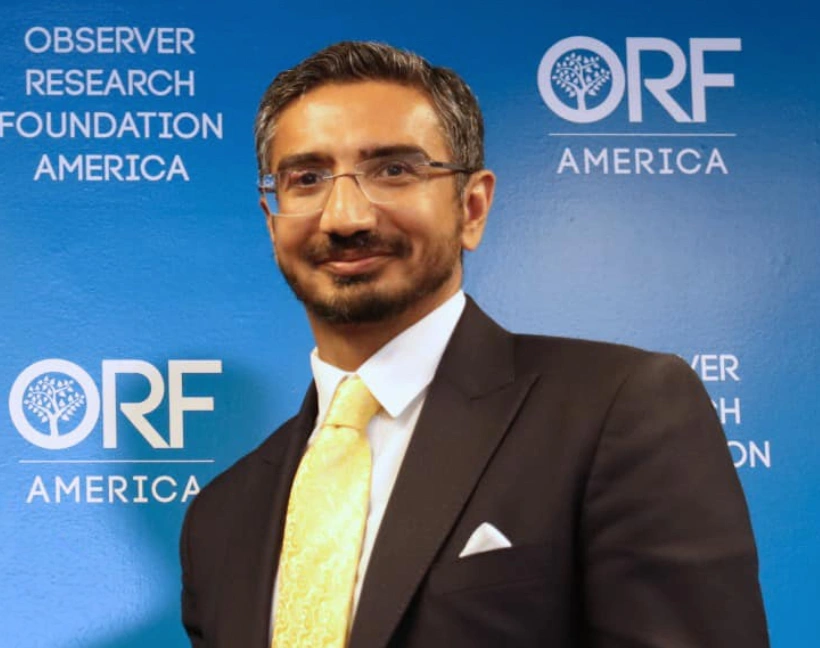 Dhruva Jaishankar[/caption]
Dhruva Jaishankar[/caption]
"What differentiates ORF America from a lot of other think tanks in Washington is the focus on bridging the developed and developing worlds on various global issues," Dhruva explains. Under his leadership, the organization has launched several ambitious projects.
At ORF America, we conduct research on U.S.-India relations, U.S. alliances and partnerships, and Global North-Global South engagement. We also convene topical roundtables in Washington and conferences around the world, including in India, Europe, Africa, the Middle East, and Latin America. Finally, we organize leadership development programs, including on climate and energy issues, China, and AI policy,” he mentions.
ORF America collaborates closely with ORF’s three centres in India—Delhi, Mumbai, and Kolkata—as well as its Middle East branch in Dubai. "We collaborate closely and work together on various projects," Dhruva says, highlighting the organization’s unified approach.
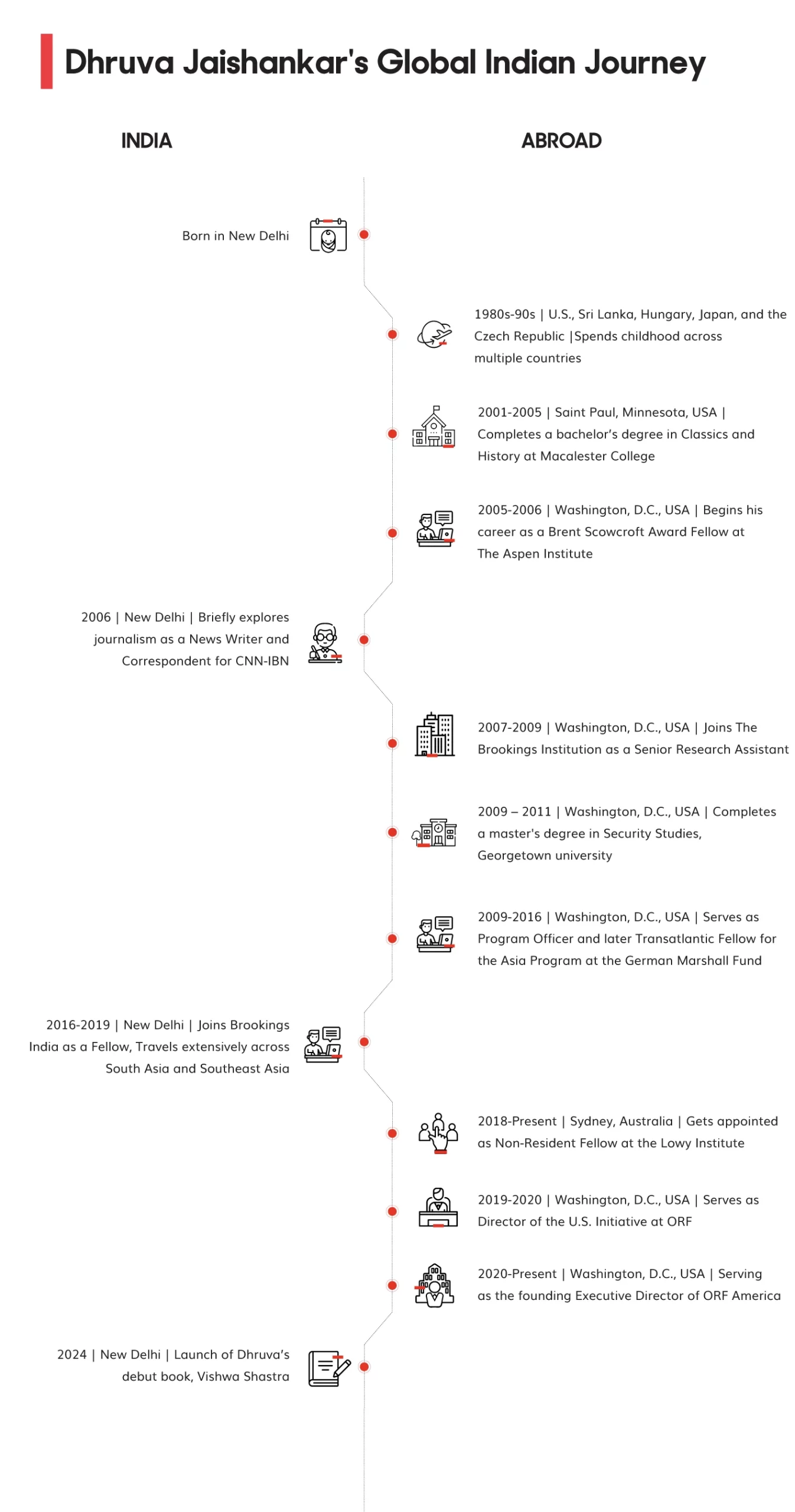
Married to an American historian, Dhruva started his family in Delhi before moving to the U.S. “We keep personal and professional life separate,” says the devoted father of two children, ages seven and four. Although he travels frequently for work, he makes an effort to spend quality time with them. He enjoys cooking for his kids and being with them during this stage of their lives, as they grow and learn new things. “Outside of work, I spend most of my time being a father,” he smiles.
Enjoying life in America, the Global Indian remains deeply connected to his native country, with its capital, Delhi, holding special significance in his journey. He was born in the city, returned at age nine, and later moved back twice as an adult. “In fact, I started my family there, and my first child was born in Delhi,” he shares.
Dhruva Jaishankar is excited about the next milestone in his journey—the release of his debut book, Vishwa Shastra, published by Penguin Random House India. The book offers a comprehensive exploration of India’s historical and strategic role on the global stage.
[caption id="attachment_60733" align="aligncenter" width="431"]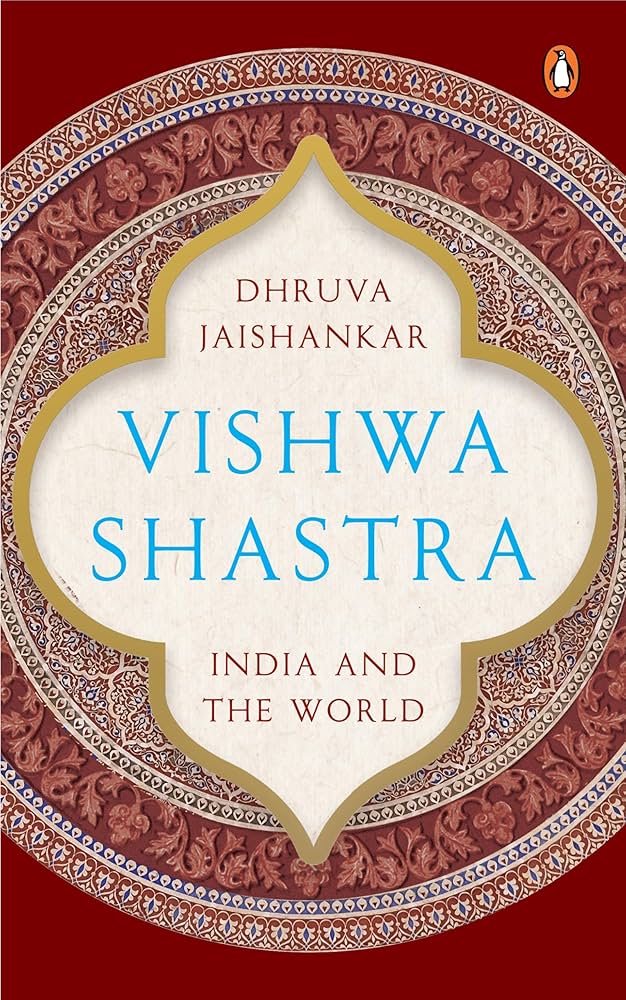 Cover image of Dhruva's book[/caption]
Cover image of Dhruva's book[/caption]
"One big motivator for me," Dhruva shares, "was the many talks and presentations I gave to student audiences across India, while I was working there between 2016-2019. Students from diverse backgrounds—not just social sciences but also law and engineering—showed a deep curiosity about India, its international relations, and its history. I realized there wasn’t a good book that offered a comprehensive starting point to understand India's interactions with the world."
He added, “My primary goal in writing this book was to create a foundation, especially for young Indians, but also for anyone interested, to learn more about India and its international relations."
The book delves into India’s ancient connections with regions spanning the Mediterranean to Asia, the enduring impact of colonialism, and the country’s post-Independence challenges, including its rivalries with Pakistan and China. It provides a framework for understanding India’s evolving geopolitical landscape while presenting forward-looking strategies. The second part of the book addresses five critical challenges: leveraging the economic environment for growth, integrating with neighbouring countries, balancing relations with a rising China, combating terrorism, and advocating institutional reforms in global governance.
Renowned writer and politician Shashi Tharoor has endorsed Vishwa Shastra, calling it, “An impressive tour d'horizon spanning centuries of India's strategic thought, traditions of statecraft, and contemporary foreign policy.”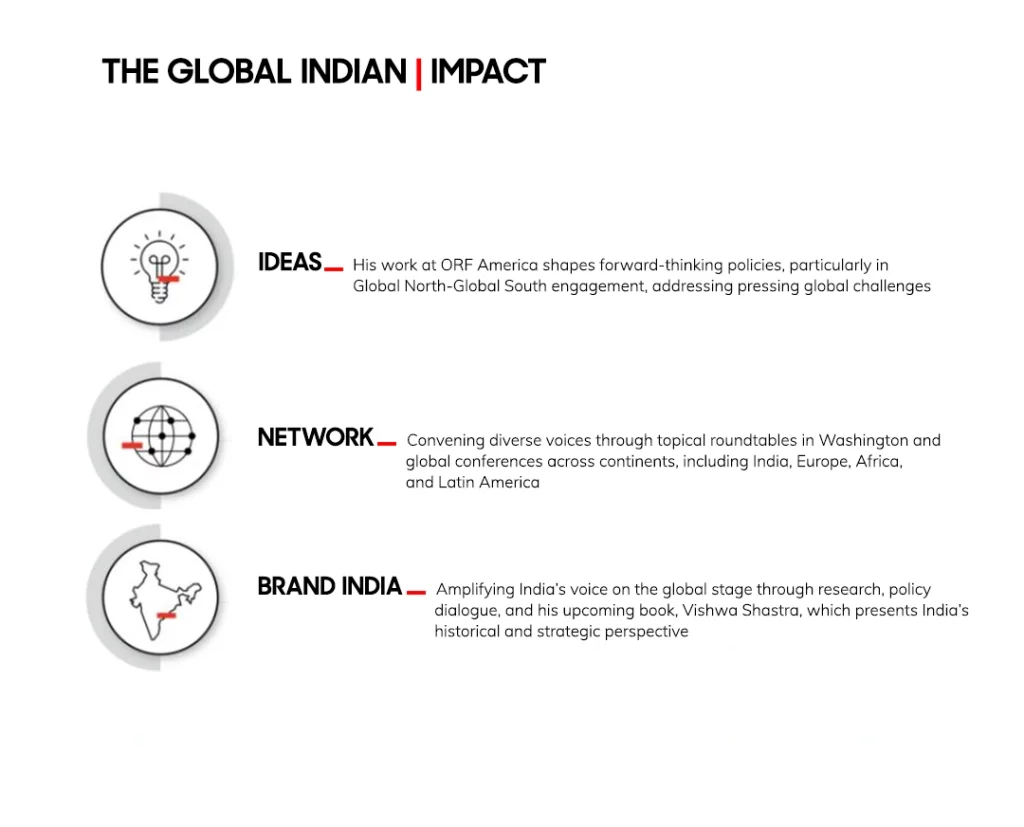
The enduring bond with his roots continues to inspire Dhruva Jaishankar’s work. While influenced by his family’s legacy, Dhruva Jaishankar’s journey is defined by his own vision—one that aims to elevate India’s role in an interconnected world, bridging continents and generations alike. With his first book, Vishwa Shastra, he hopes to further this mission and contribute to a deeper understanding of India’s place in the global arena.
Reading Time: 5 mins
(May 26, 2024) It is always heartening to meet a young person who follows his or her passion while caring about the environment. Their career trajectory feels like a victory lap – a win-win situation where they are doing what they love best, and simultaneously, saving the earth. One such determined young entrepreneur is Sumukh Tallam from Bengaluru. Though he comes from a family of jewellers, he had an early interest in cooking. One he attributes to his mother and grandmother. “I was always curious about what went on inside the kitchen. My mother and grandmother were feeding us haute cuisine, microgreens and edible flowers, and experimenting with regional cuisines, well before these concepts became trendy,” recalls Sumukh in an exclusive with Global Indian, adding, “My grandmother has also written a cookbook – Pakadharshi – by Bhoopalam Suryakaanthamma and Tallam Vijaayalakshmi.” The freedom to pursue his calling led Sumukh to a post graduate degree in culinary arts at Manipal University. This was followed by a course in food styling and mixology at EBS, London. On his return to India, he worked with various food brands as a food stylist before launching his restaurant, Maya, in Jaya Nagar, Bengaluru. [caption id="attachment_51973"
Read Moreds as a food stylist before launching his restaurant, Maya, in Jaya Nagar, Bengaluru.
[caption id="attachment_51973" align="aligncenter" width="465"]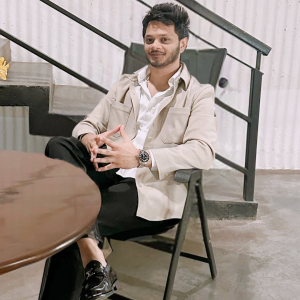 Sumukh Tallam[/caption]
Sumukh Tallam[/caption]
Maya is unique in several ways. Sumukh elaborates, “Firstly, I believe in the concept of the maker’s maya – that everyone has a creative side. You have an ikigai, as do I, and Maya gives you a platform to reflect on your creative side, whatever it may be – from painting to writing to cooking.” To each their own Maya. In keeping with this paradigm, the restaurant is on the first and terrace floors and the ground floor houses an art gallery. “We provide a platform for up-and-coming artists and my sister Anusha, who runs a creative studio named Ebbxflo, is also a curator. We have a different artist exhibiting every month and Maya is the first restaurant in India to have built a dining experience inside the premises of an art gallery where you can enjoy a slow, relaxed meal and art.”
The bungalow in Jaya Nagar is on a long-term lease and Maya has been designed in keeping with the Sri Lankan architect Geoffrey Bawa’s design philosophy. Seamless incorporation of lush greenery, natural elements and ventilation, open spaces, and a synergistic blending in with the surroundings. As a nature lover, Sumukh has planted over 100 species of plants there that have certification from the Lalbagh Botanical Institute. He plans to bring in 100 more to make it the greenest restaurant in the country.
The ambience is all about tranquil and calm surroundings. The music playing in the background too is soothing. The icing on the cake? The food reflects all these artistic elements. Says Sumukh, “I believe that you eat with your eyes first. The entire concept of eating is an art to me. When you eat mindfully, your soul is appeased. I aim to create that experience with every meal. I want my guests to have a consciously relaxed, spatial and culinary experience. Maya has a homely feel amidst all the chaos; we chose this area because you won’t find a green belt like this anywhere in the city, and the locality represents old world Bengaluru.”
[caption id="attachment_51974" align="aligncenter" width="703"] Maya[/caption]
Maya[/caption]
The most important aspect of course, is the food. Sumukh, who refuses to call himself a chef, but prefers the moniker ‘a passionate cook,’ has designed the menu to serve global cuisine in a farm to table concept. “We source most of our ingredients locally. Most of them are organically grown. Having said that, since the water and soil is contaminated with pollutants and pesticides from elsewhere, one can’t really say they are 100 percent organic. Our herbs however are certified organic. We source our produce fresh every day directly from farmers and they are all within an 80 km radius of the city. We have a zero plastic policy and within six months we aim to achieve a 100 percent zero-wastage in our kitchen too. Our crockery is sourced from a company that works with tribals who live around the Nugu river. The eggs and chicken come from a farm where they are not fed hormones or antibiotics and are completely free range. Our seafood comes from Mangalore.” All in all, with the best practices to bring in the best quality and freshest food to the table.
The cuisine is global with Pan-Asian, Italian and a smattering of Indian dishes on the menu. Sumukh reveals, “We did try cuisines of my choice – Greek, Ethiopian and a bit of Sri Lankan. For some reason, they were not popular so we stuck to global food with wood fired pizzas, freshly made spring rolls etc. The most popular dishes today are the Vietnamese Onion Flower – a starter made with the flower bloom of the onion, the pizzas, and the Vegan Spring Rolls with julienned vegetables and glass noodles. Though they take us five to ten minutes more, we roll the wraps freshly just before filling them. This makes them less oily and is in keeping with our fresh food-only philosophy. The Palak Stuffed Paneer and the Kokum Infused Prawn are popular dishes. I love working with unique and atypical ingredients like kokum, jicama, palm sugar, cayenne pepper, salt alternatives like soy, miso paste, parmesan rinds, and pickle juice.
Maya is an all-day diner open from noon till late night but comes with its inherent challenges. Sumukh believes they are commonly faced in the hospitality business. “Staff attrition is huge; it is the hardest because getting good skilled staff is difficult. The overheads eat into our profits as real estate costs in Bengaluru are quite high. Plus, we face constant harassment from the regulatory and compliance folks.”
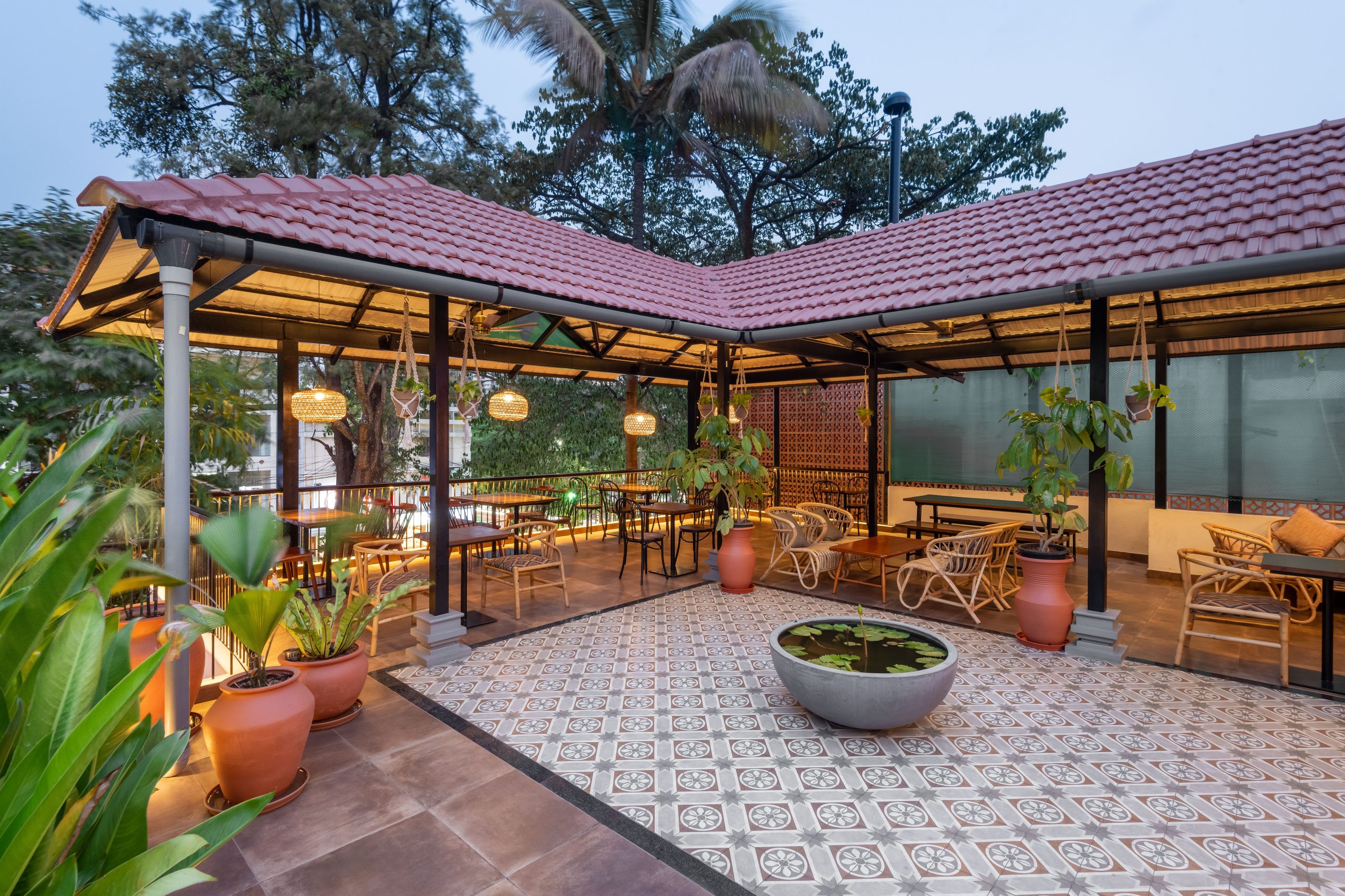
Despite all this, once the zero wastage in food milestone is achieved, Maya will become the greenest restaurant in India due to its sustainable practices. Sumukh’s company is called The Food Smith and Maya is one of its brands. Next on the agenda is a new project in Hyderabad, and, at Maya – virtual art exhibitions, artisanal food pairings where the artist’s vision is echoed through the food. He plans to hold an exhibition of the wildlife photographs shot by Chef Michael Swamy, Sumukh’s mentor and a photographer as well. He also wants to grow herbs where guests can walk through the garden and pick their herbs as ingredients or garnishes for the dish they have chosen.
With Maya on such a solid footing, where Mama Earth and her well-being is as important as serving good food, Sumukh is bound to be blessed by the universe to achieve greater heights.
Michelin star or guided restaurants as well as street hawkers, “I love jumping into the authenticity of the regional cuisine and trying local specials. Here are some of the best restaurants I have tried around the world,” he concludes.
Follow Maya on Instagram.
(July 29, 2023) One rainy day, while playing indoor cricket with his younger brother, a 12-year-old Soumik Datta discovered an old sarod that once belonged to his grandmother. Today, the award-winning multi-disciplinary artist has released several albums. An ambassador of the Earth Day Network, Soumik often addresses social and environmental issues through his art. His recent animated musical film Songs of the Earth, premiered at The UN Climate Change Conference in Glasgow. A short story about Asha, a young climate refugee from Bengal who searches for her father across the world, through burning forests and rising oceans, the film was commissioned by the British Council. [caption id="attachment_14964" align="aligncenter" width="619"] British-Indian musician Soumik Datta[/caption] Just a month ago, the sarod player was appointed as the artist in residence by the UK’s prestigious Philharmonia Orchestra. The composer, producer and TV presenter will take on the role for the 2023-24 Season. "I read that the climate disasters caused more internal displacement than war. This had a deep impact on me, especially as someone privileged, living in London. What came out was in the shape of a short story — about a young climate refugee called Asha searching for her father across burning forests
Read Morehan war. This had a deep impact on me, especially as someone privileged, living in London. What came out was in the shape of a short story — about a young climate refugee called Asha searching for her father across burning forests and melting glaciers. This was the start of Songs of the Earth," shares the artist, during an interaction with Global Indian.
Soumik was born in Indian to banker father and film director mother, and spent the initial years of his life in Mumbai. A child, who loved the sea, Soumik shares that he had no musical inclination while he stayed in India. "I was a proper Mumbai kid. My days were mostly about school, playing with my friends - but I wasn't into music at all while I was in India. I wonder, had my family continued living there, if I would have ever become a musician," shares the 39-year-old artist. Soumik has a younger brother, Souvid Datta, who is now a well-known photographer and filmmaker.
https://www.youtube.com/watch?v=UerChOwsjq0
When a 11-year-old Soumik first moved to London, the artist reveals that it was a bit of a culture shock. "My father was already working in London, so the family eventually moved there. I was one of the very few coloured kids in my school. I had to learn a lot in terms of the vocabulary, which was quite different from India. It took an adjustment period, but looking back I feel it all happened quite quickly," the artist shares, adding, "My parents listened to classical music. I remember my mother would sing Tagore songs. I was a huge Shahrukh Khan at that time, so I would listen to his songs. So, while I wouldn't sing to play, music was always around."
Soumik's first introduction to the stringed musical instrument was purely by chance. "It rains a lot in London, and on one such day, I and my brother were playing cricket indoor. I shot the ball a little hard and it dashed into a cardboard box kept in the corner. When I went to check what was inside the box, I found a shiny instrument with stringed attached to it, which I had never seen before. I showed it to my father when he came back from work and he told me what it was and that it belonged to my grandmother. That evening my father gave me my first sarod lesson," shares the artist, laughing, "I didn't really play cricket after that."
[caption id="attachment_24906" align="aligncenter" width="609"]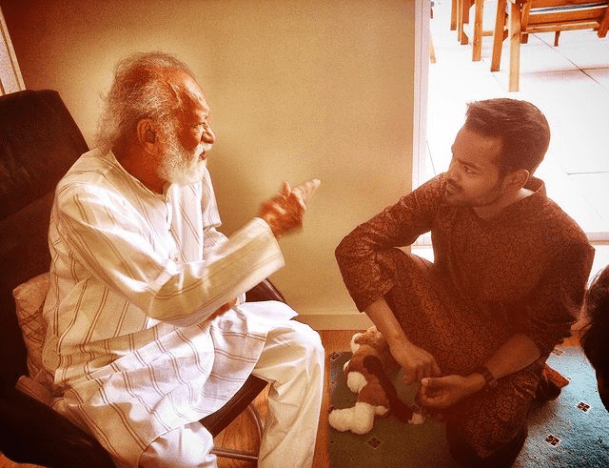 Soumik with Pandit Ravi Shankar[/caption]
Soumik with Pandit Ravi Shankar[/caption]
After a year, Soumik was introduced to his Guru, renowned artist Padma Shri Pandit Buddhadev Das Gupta, while he was on a vacation in Kolkata. "He looked at me noodling at the instrument and told me to come to his house next morning at 6 am. And just like that my training started," the artist quips. While most students attend music classes for years, Soumik had an unusual training. "The training was quite rigorous while I was in India, each year during vacation. However, my guru would design the training in a way that even when I returned to London, I would still be able to practice the ragas every day. I was very blesses to have him train me," the artist shares.
[caption id="attachment_24905" align="aligncenter" width="606"]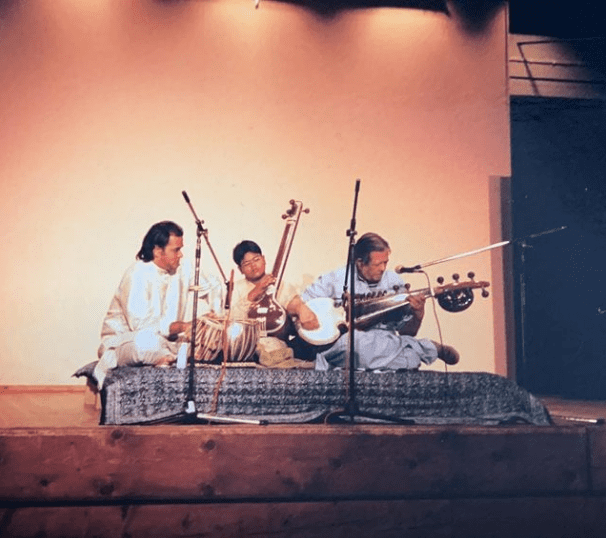 Young Soumik, playing the tanpura, with his guru Pandit Buddhadev Das Gupta[/caption]
Young Soumik, playing the tanpura, with his guru Pandit Buddhadev Das Gupta[/caption]
However, sarod was not the only thing that captured Soumik's interest. Says Soumik, "Growing up I listened to every kind of music. I remember in school I would play the English tracks on the sarod. So, that way I became more interested in the contemporary music as well."
After completing his school, the artist attended the University College London, and later studied at Trinity Laban Conservatoire of Music and Dance, graduating in 2009 with an MMus in Composition. Meanwhile, Soumik toured with his band to various cities with his songs. However, a big break came when Soumik was invited by American rapper Jay-Z to play at the Royal Albert Hall in 2006 and later even performed with Beyoncé.
https://www.youtube.com/watch?v=Mshi-7hfKJM&list=RDEMBAf3gaMmjK8gH1kxW95Nwg&start_radio=1
Subsequently, Soumik's music started addressing several social issues. "I wanted to talk about these issues since they affect each one of us. I feel that music has the power to make people think," quips the artist. In 2021, Soumik released a six-part visual album titled Silent Spaces, which is a creative lockdown response driven by a pervading sense of Covid-induced personal and professional loneliness. Later the same year, the British-Indian artist won the British Council Commission for Climate Change Award to create a project titled Songs of the Earth which will be released in the run-up to the 26th UN Climate Change Conference of the Parties (COP26) in Glasgow.
"When British Council announced the award, I was already devising music and film projects about the environment and had already released an album Jangal — to raise awareness about the impact of deforestation with Sachin. I had a premonition of working together again, so I wasn’t surprised when we landed this award," shares the artist. The animated film Song of the Earth contains an eight-track album, in which each song represents a specific environmental issue experienced through Asha’s young eyes. The songs create a unique narrative, covering issues from floods and eco fashion to deforestation and industrialisation.
https://www.youtube.com/watch?v=-g3Dbn6Heog
Soumik shares that he wanted to write the songs in a manner in which the musical quality wouldn’t diminish and the lyrics would appeal to all types of audience. “I wanted to write the songs in a way that wouldn’t detract from their musicality but would hold hidden layers of meaning for the different kinds of listeners,” the artist says, adding, "Throughout the film, Asha’s Baba’s teachings offer her hope and propel her to face the dangers and calamities which lie ahead. Datta fervently believes that to face the problem that climate change poses for us, we must not be motivated by fear but instead by the hope for a better future."
[caption id="attachment_24907" align="aligncenter" width="572"]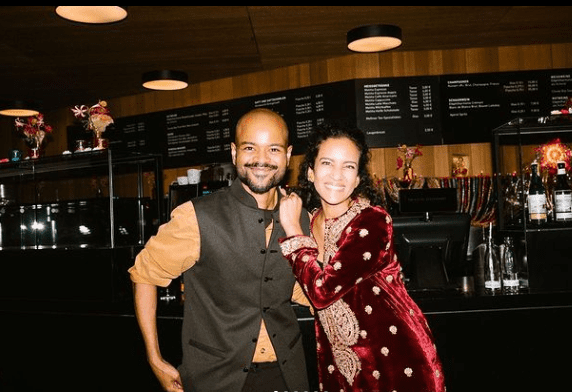 Soumik with British-Indian-American sitar player, Anoushka Shankar[/caption]
Soumik with British-Indian-American sitar player, Anoushka Shankar[/caption]
The artist collaborated with Sachin Bhatt and Anjali Kamat who visualised the story from page to screen and helped him manifest his lead character, Asha and the climate emergency that spirals around her. Currently, the artist is working on a new show that will address immigration, mental health issues, and the refugee crisis.
Reading Time: 6 mins
(March 25, 2022) When Geetanjali Shree was a young girl her mother would often joke about how she wanted to tell stories more than she wanted to hear them. Today an established Hindi author, her last book Ret Samadhi was recently longlisted for the Man Booker International Prize. The brilliant author of five Hindi novels and five short stories, Geetanjali started her writing journey as a nine-year-old. "I was fascinated by stories and always wanted to write my own," smiles Geetanjali during an interview with Global Indian. "My mother would narrate stories to us siblings. Also, since my father was a bureaucrat, we had several people working for us at our house. I remember listening to stories from those ladies as a child. I was mesmerised by how words could create a whole new world, which was so engrossing. Unfortunately, I do not have those stories though even I am curious to know what I wrote back then,” adds the Delhi-based author. For the love of Hindi Growing up in various towns of Uttar Pradesh in the late 50s and 60s with four siblings, the 64-year-old author reveals it was the vibrant culture of those towns and their language that
Read Moreesh in the late 50s and 60s with four siblings, the 64-year-old author reveals it was the vibrant culture of those towns and their language that gave her a foundation. While she attended an English-medium school, the scarcity of English-language children’s books turned out to be a “blessing in disguise” for her. “I used to read Chandamama and Nandad as a child, and that gravitated me towards tales from the Ramayana, Mahabharata, Arabian Nights, Panchatantra, Kathasaritsagara and Chandrakanta Santati. Had I not experienced this childhood, I am not sure if I would have been able to write these stories,” reminisces the author who has no doubt been influenced by her historian husband.
[caption id="attachment_21807" align="aligncenter" width="638"]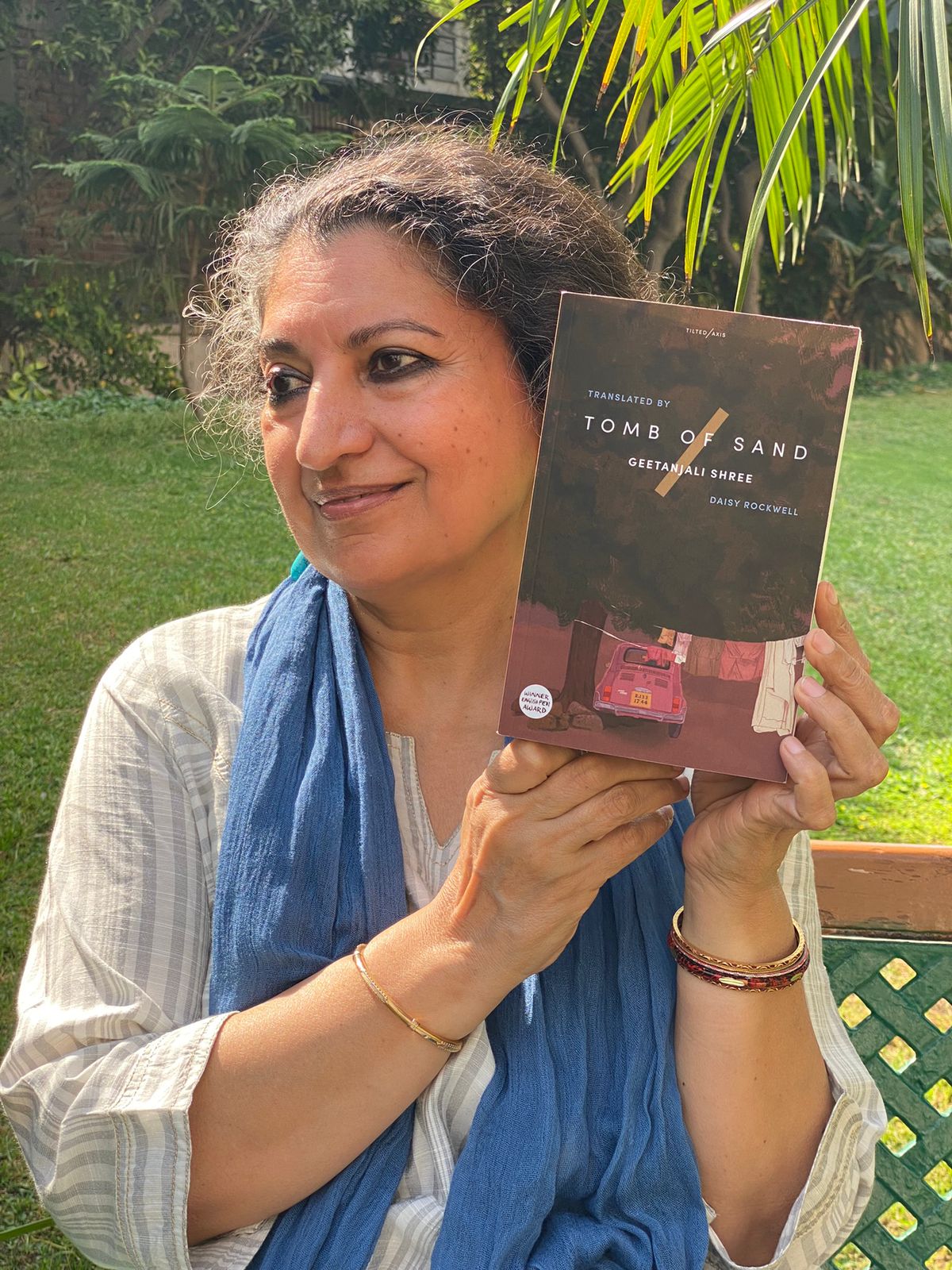 Geetanjali Shree, author, Photograph by Jayanti Pandey[/caption]
Geetanjali Shree, author, Photograph by Jayanti Pandey[/caption]
Even when she moved to Delhi to pursue bachelor's in history from Lady Shri Ram College, Delhi University, and later master's from Jawaharlal Nehru University, Geetanjali felt a tug towards Hindi literature. “In JNU, I was pretty sure that I wanted to pursue writing in Hindi. My dissertation topic was on Hindi literature representing the nationalist thought of the pre-Independence years, in which I focussed on Prem Chand and his writings.”
Calling herself a “slow writer,” Geetanjali feels that she started her professional journey as a writer a little late. Her first story, Bel Patra (1987) was published in the literary magazine Hans, however, it was the publication of her short story collection Anugoonj (1991) that catapulted her into the Hindi literary scene. Post this, several other works of Geetanjali, including Mai (1993), Hamara Shahar Us Baras (1998), Tirohit (2001) and Khālī Jagah (2006) hit the bookshelves across India.
However, it’s her 2018 novel Ret Samadhi that has put her on the global map. Translated recently into English as Tomb of Sand by Daisy Rockwell, it has become the first Hindi-language novel to be nominated for the International Booker Prize. Calling it a “proud moment,” she is quite happy to have scripted history. “It is a very proud moment for me, not just as a writer, but also as an Indian. This will bring a certain focus on Hindi literature and other Indian languages. We need people to realise that there is so much literature waiting to be discovered.”
[caption id="attachment_21831" align="aligncenter" width="558"] Geetanjai with her favourite author, Krishna Sobti[/caption]
Geetanjai with her favourite author, Krishna Sobti[/caption]
Ret Samadhi narrates the story of an 80-year-old woman, who is depressed after her husband’s death. Eventually, the lady comes out of the depression and decides to visit Pakistan to finally confront the past that she left behind during the Partition.
Giving an insight about the much-talked-about book, she shares, "Actually it was the image of a woman in a joint, orthodox, middle-class family, who was sitting with her back turned, that stayed with me for a very long time. Somewhere it made me wonder if she was turning her back to the people around her, or her life. It took me around seven to eight years to finish Ret Samadhi.”
An author who likes to create a dialogue with her reader through all her books, Geetanjali's work is not limited to the Hindi literatis. Many of her books have been translated into English, French, and even German. However, the author doesn't believe in picking her own translator. “I have never picked any author to translate my books. I feel I have been lucky in that area, as the translators have done justice to my work. In fact, I had never met Daisy Rockwell, when I heard that she was thinking of translating Ret Samadhi into English. However, when we spoke about the book, I realised that she had a sense of emotions and relationships in the book,” she smiles.
[caption id="attachment_21829" align="aligncenter" width="521"]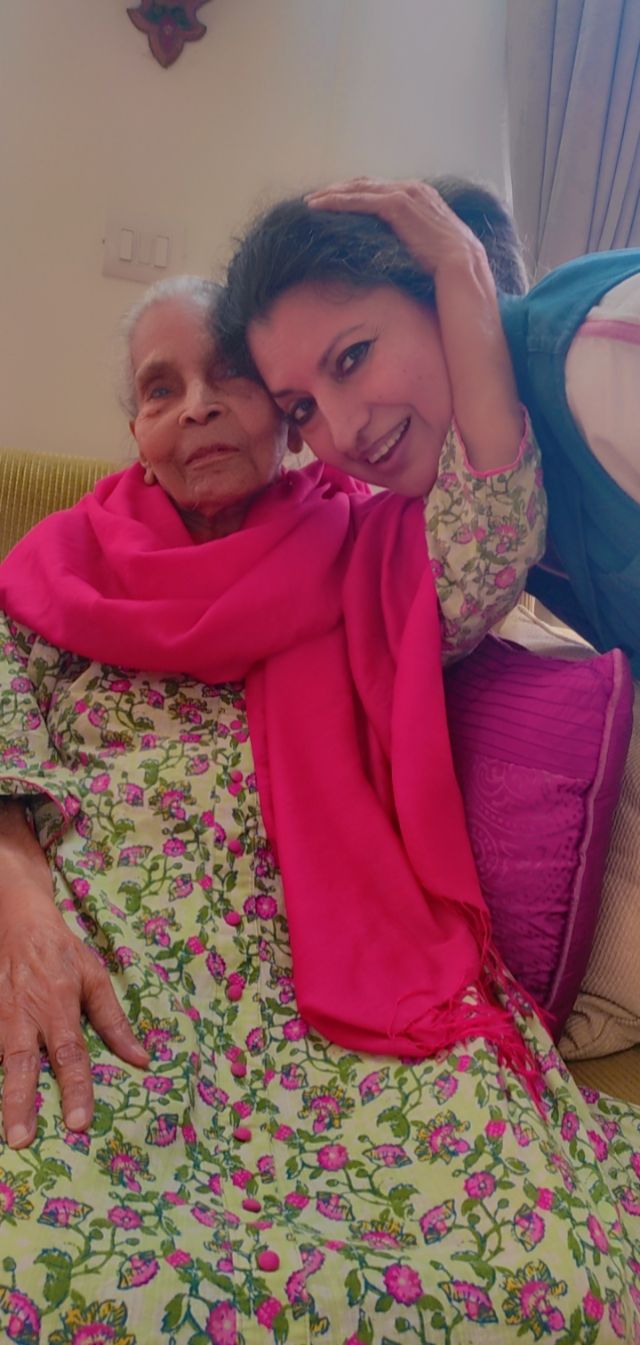 Geetanjali with her mother[/caption]
Geetanjali with her mother[/caption]
While she doesn't like calling herself a “theatre person,” the author has worked with prominent thespians such as Anuradha Kapur and Kirti Jain on various plays. Having written many plays for the theatre group Vivadi, Geetanjali shares that she loves working in an interactive environment. “Writing something for theatre is a collective exercise, with everyone from the director to the actors and others contributing to the storyline. I really like working like this,” she adds.
When Geetanjali isn’t busy weaving magic with words, she loves listening to music. “I love a whole range of genres – Hindustani classical, old Bollywood, jazz, Baul and Rajasthani folk,” she concludes.
Reading Time: 5 mins
(October 29, 2021) Years ago in the picturesque coastal town of Azhikode was a young lad who studied at a Malayalam-medium school. Born to teacher parents, he would often skip classes and learn at home instead. But who was to know that a few years down the line, he was going to become a teacher himself and build a world-class product that brought learning right to one’s doorstep. Byju Raveendran’s success story is fit for a film script. From helping friends with CAT prep to acing the exam himself with minimal preparation, he’s had a flair for business and management and it shows in the success of BYJU’s. The company that this Global Indian built with his wife Divya Gokulnath is today considered one of the most valuable education technology companies. In fact, this entrepreneur has found his fair share of accolades coming his way as well. From being awarded the 2019 Manorama Newsmaker award, the 2020 Ernst & Young Entrepreneur of the Year title, to being listed in Fortune Magazine’s 40 Under 40 and receiving the 2021 Forbes India Leadership Award, he has managed to add many a feather to his entrepreneurial cap. [embed]https://twitter.com/BYJUS/status/1443917078801518592?s=20[/embed] The boy from coastal Kerala
Read Moretune Magazine’s 40 Under 40 and receiving the 2021 Forbes India Leadership Award, he has managed to add many a feather to his entrepreneurial cap.
[embed]https://twitter.com/BYJUS/status/1443917078801518592?s=20[/embed]
Born in 1981 in Azhikode to teacher parents, Byju’s journey was always deeply entrenched in academics. His father was a Physics teacher and his mother a Math teacher at a Malayalam-medium school in Kannur; the same school where Byju studied. The boy would often skip classes, but made up for it by learning at home. He went on to graduate as a mechanical engineer from the Government Engineering College in Kannur before moving to Singapore in 2001 to work with a shipping company. When he’d visit home, he’d often spend time tutoring his friends preparing for the competitive CAT.
Curious to see how he’d score, he took the test twice himself... with minimal preparation. He got through both times having scored 100 percentile and got interview calls from the IIMs. But Byju’s heart lay in teaching and an MBA was not his cup of tea. By 2005 he’d quit his job and moved back to India to teach MBA aspirants and his popularity as a teacher soared. In 2011 he formally set up his company Think & Learn, today BYJU’s parent company. While it initially offered coaching for CAT aspirants, Byju gradually expanded to other subjects as well.
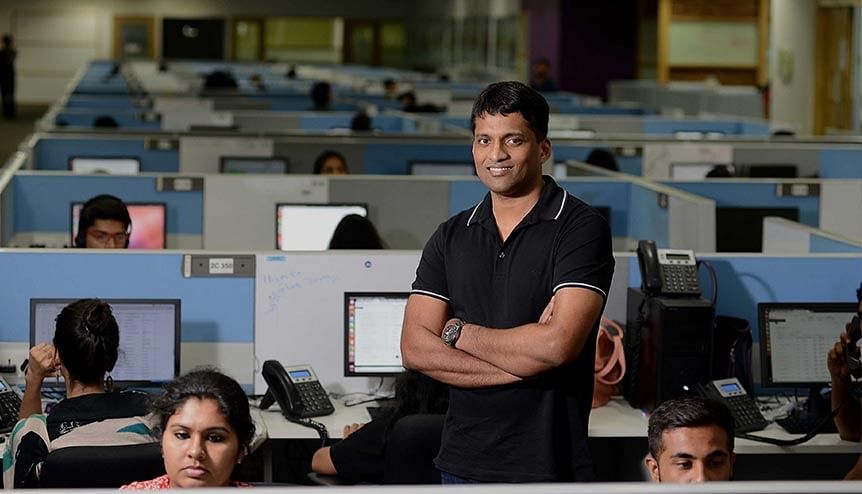
As business grew, Byju launched BYJU’s - The Learning App, an online offering in 2015; it soon climbed the popularity charts for offering students personalised learning programmes. Four years in the making, the app offered educational material to school students as well as coaching for CAT, NEET, UPSC, GMAT, JEE and GRE. What clicked for the app was how interesting and engaging the educational material was made.
Today, BYJU’s is the largest edtech platform in India with several lakhs of subscribers in its kitty. But according to Byju, they have only reached just 2% of the country’s student population. In an interview with The Week he said, “Education is the best way to make it big and our efforts are to help children become self-learners in order to chart their own journeys. In this segment, the fun is in helping millions think and learn better.”
[caption id="attachment_14419" align="aligncenter" width="640"] Byju Raveendran's wife and co-founder Divya Gokulnath[/caption]
Byju Raveendran's wife and co-founder Divya Gokulnath[/caption]
The app’s Knowledge Graphs point students in the direction of how different concepts are related to each other and shows them relevant concepts or information based on what he/she is learning at that point of time. This allows the whole learning process to get personalised as per the student’s learning pace and strengths.
Today, BYJU’s is one of the most funded education startups in the world with a total of $1.6 billion in funding. Some of its marquee investors include Mark Zuckerberg, Tencent, Naspers, and Mary Meeker’s Bond Capital.
The pandemic and resultant need for online learning has only helped further leverage BYJU’s popularity. The startup doubled its revenue to ₹2,800 crore in 2020; the edtech industry in India is estimated to be worth $750 million. According to an EdTech in India report, the online education in India is projected to increase by 6.3 times by 2022. BYJU’s, thus, happens to be at the right place and at the right time.
Since its launch, the startup (now a decacorn) has come a long way and is now India’s most valuable startup, overtaking even Paytm with a valuation of $16.5 billion.
[embed]https://www.youtube.com/watch?v=z7YdX7-46zI[/embed]
Giving Back
Last year Byju launched an Education for All initiative to make digital learning accessible to millions of children from underserved communities. The programme aims at democratizing education by ensuring that all children get equal access to quality learning opportunities. To this end, BYJU’s signed MoUs with mission-aligned partners like The American India Foundation, Magic Bus, Save the Children, United Way and Vadham Tea. Through this, Byju hopes to impact at least 5 million children by 2025.
Reading Time: 8 mins